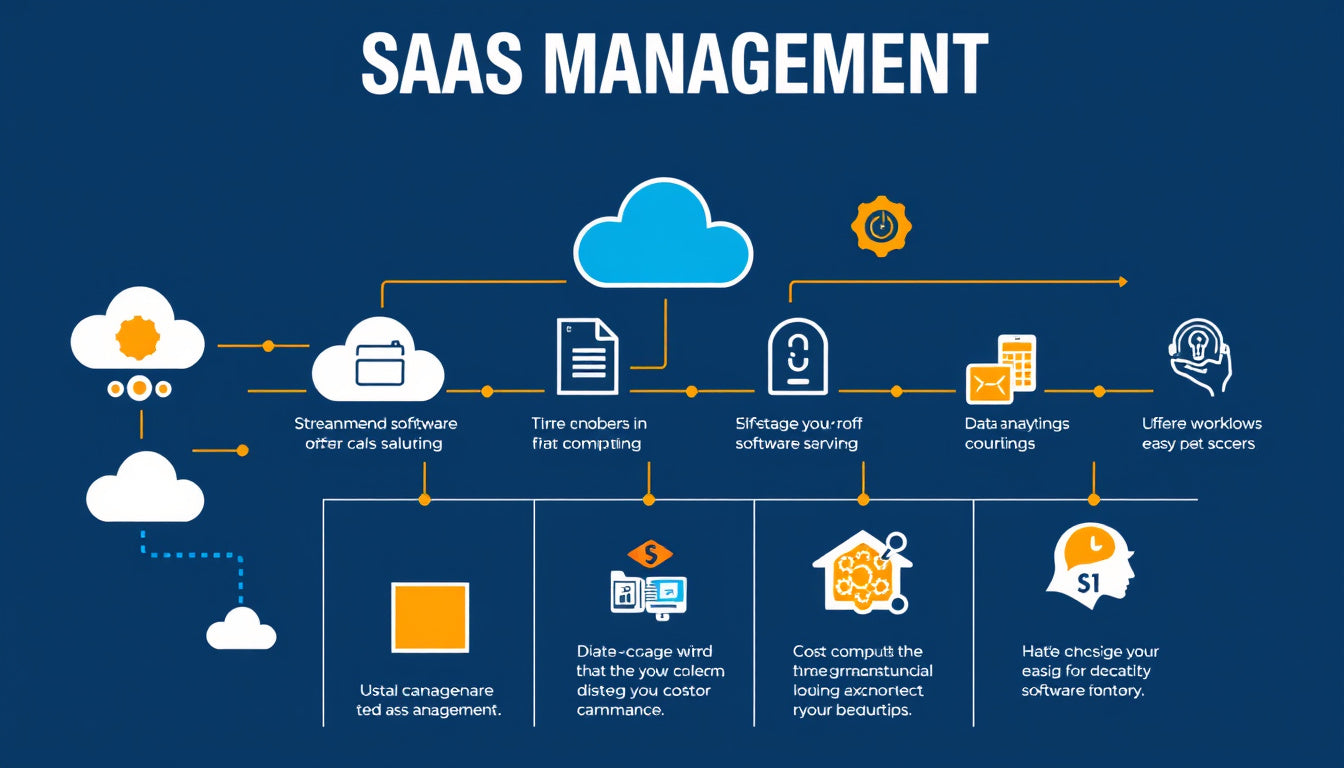As organizations increasingly rely on cloud-based solutions, the management of Software as a Service (SaaS) applications has become critical for operational efficiency and cost control. This guide explores SaaS management, its importance, the challenges it addresses, and the strategies to effectively implement a SaaS management strategy.
What is SaaS Management?
SaaS management refers to the systematic administration, optimization, and governance of SaaS applications within an organization. This involves managing subscriptions, licenses, renewals, and ensuring compliance with organizational policies and regulations. By adopting a comprehensive SaaS management framework, businesses aim to achieve four primary goals: visibility into their SaaS portfolio, license optimization, cost savings, and risk management.

Why is SaaS Management Important?
The rise of SaaS has transformed how companies procure and utilize software. Unlike traditional on-premises software, SaaS applications are hosted in the cloud and generally acquired via subscriptions, allowing for flexibility and scalability. However, this shift has led to several challenges that necessitate a robust SaaS management approach:
-
Decentralized Procurement: Traditionally, IT departments controlled software purchases. Now, individual employees or teams often subscribe to products on their own, leading to redundancy and inefficiency.
-
Cost Containment: On average, organizations spend millions on SaaS, yet a significant portion of this spend is wasted on unused licenses. Effective management helps tighten budgets and ensure that every dollar contributes to business value.
-
Shadow IT Risks: As employees adopt applications without IT’s consent, organizations face heightened security risks. Managing these unauthorized tools is crucial for maintaining data integrity and compliance.
-
Visibility and Control: Lack of centralized oversight can result in blind spots where critical applications are untracked. SaaS management creates a single source of truth by consolidating application usage and financial data.
Challenges Addressed by SaaS Management
1. Visibility into SaaS Usage
With many different applications purchased across departments, it can become difficult to track who is using what. An effective SaaS management platform provides a comprehensive view of all applications, their usage rates, costs, and renewal dates, helping organizations understand their tech landscape.
2. Cost Management
SaaS management helps organizations identify redundant tools and optimize spends by providing insights into which applications deliver value. This process involves regular audits of subscriptions and usage metrics to eliminate wasted licenses and unnecessary renewals.
3. Governance and Compliance
Compliance with internal policies and external regulations can be challenging with decentralized software acquisitions. Implementing a standardized SaaS management process ensures all tools are vetted, approved, and compliant with necessary standards.
4. Mitigating Security Risks
By managing and monitoring SaaS applications, companies can significantly reduce risks associated with shadow IT. This includes establishing protocols for evaluating new tools before adoption and continuously assessing existing applications for security vulnerabilities.
Establishing a SaaS Management Strategy
A successful SaaS management strategy involves several key steps:
Step 1: Build a Foundation
Establish a clear set of policies and processes surrounding SaaS usage, emphasizing procurement, renewals, and governance. Educate stakeholders on these guidelines to foster adherence and involvement.
Step 2: Define What Success Looks Like
Determine the metrics for success specific to your organization, such as cost savings, application usage rates, and user satisfaction. Establish benchmarks to measure performance over time.
Step 3: Involve the Right People
SaaS management isn't solely an IT concern; it requires input from leaders across finance, procurement, and operations to ensure a holistic approach.
Step 4: Understand Your SaaS Stack
Conduct an exhaustive inventory of all SaaS applications currently in use within the organization. This includes identifying who manages which licenses, costs associated with each tool, and usage metrics.
Step 5: Follow Best Practices
Implement industry best practices for managing SaaS, such as regular audits, performance assessments, and user training sessions on effective tool utilization.
Choosing a SaaS Management Platform
When selecting a SaaS management platform, look for features that align with your organization’s needs, including:
- Centralized Dashboard: A comprehensive view of applications, spend, and user metrics.
- Automated Processes: Tools for onboarding/offboarding, renewals, and usage monitoring.
- Cost Optimization Features: Insights and recommendations for reducing unnecessary expenses.
- Security Features: Capabilities to manage and mitigate risks related to shadow IT.
Conclusion
With the increasing reliance on SaaS applications, effective management is crucial for maximizing investments while minimizing risks. By understanding the fundamentals of SaaS management, organizations can streamline their software operations, improve financial outcomes, and enhance compliance with security regulations. In today’s digital landscape, mastering SaaS management not only leads to cost savings but also ensures a more efficient and secure work environment.
Get started with your free Managed IT Services assessment today! Contact us at info@logicstechnology.com or by phone at (888) 769-1970.

